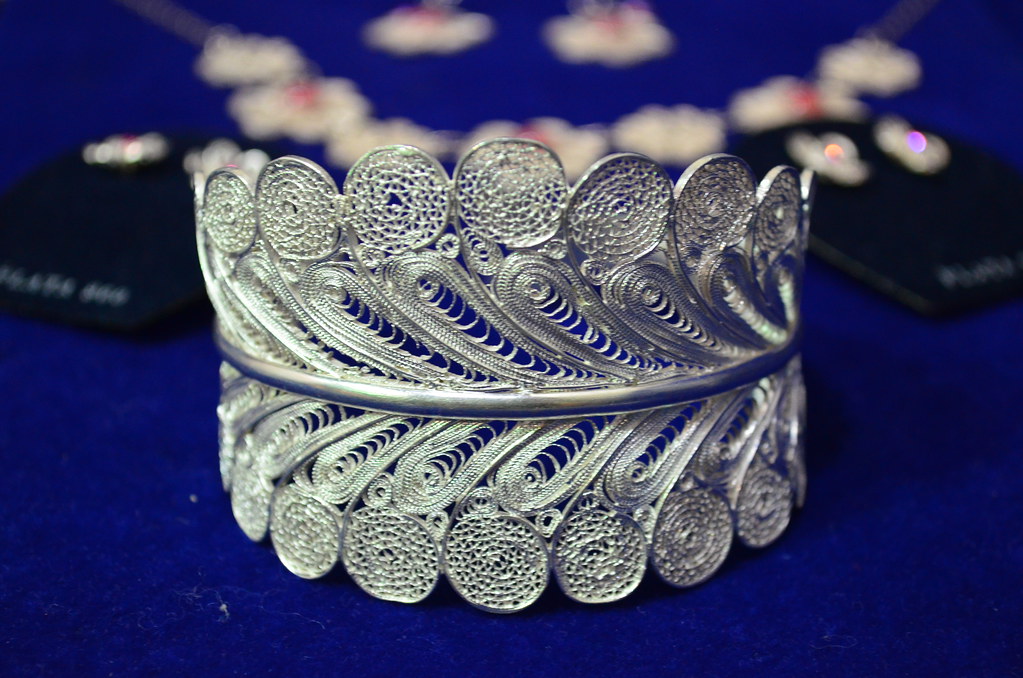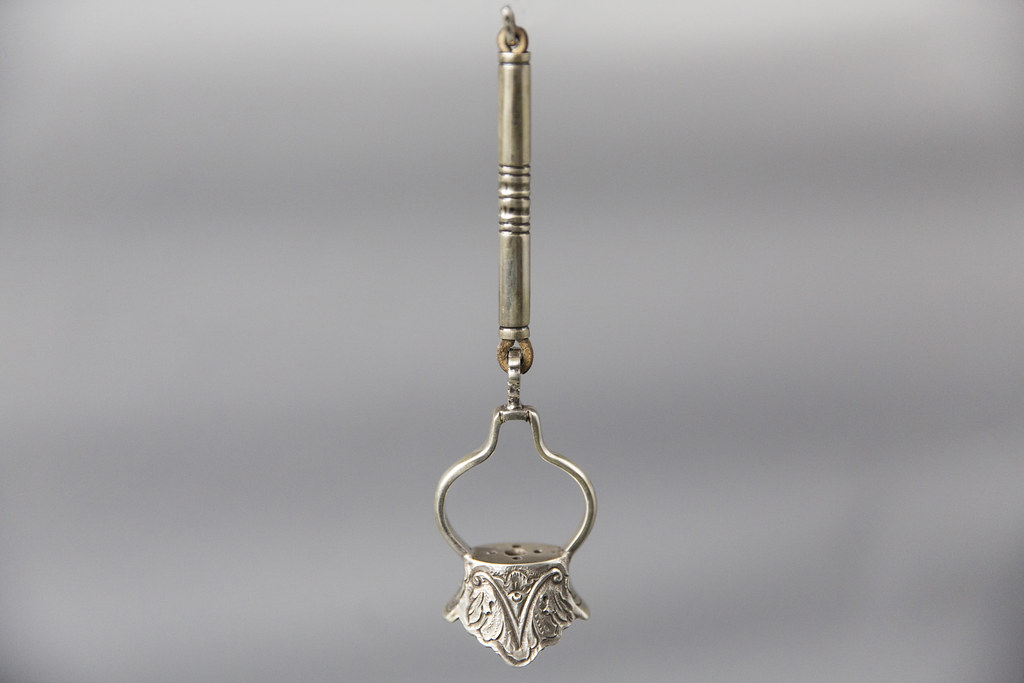Description
La platería argentina es la tradición más importante en la rama de los metales y en ella pueden reconocerse diferentes vertientes y aportes. Platería, orfebrería, filigrana, grabados son parte de la jerga de oficios y especialidades de la rama de la producción artesanal de los metales. Algunas de sus expresiones son patrimonio cultural inmaterial de nuestro país.
La tradición de los metales nobles o preciosos cuenta con una larga historia en nuestro territorio. Así lo testimonian los objetos que datan en el 1000 AC en los momentos agroalfareros tempranos del Noroeste argentino, como también las ofrendas de altura en los períodos prehispánicos más cercanos. Desde el siglo XVI la rama artesanal transitó un crecimiento con diferentes aportes plasmados en obras emblemáticas de las colecciones históricas de diferentes instituciones.
La platería colonial tiene su expresión más vital en la filigrana, especialidad que se mantiene en la provincia de Jujuy en manos de artesanos tradicionales como es el caso de Luisa Serrano. El desarrollo de los oficios de la platería rioplatense en el período de la consolidación nacional tanto como el aporte de las corrientes inmigratorias de fines del siglo XIX y principios del XX imprimieron el carácter de una producción presente en la actualidad, en algunas regiones argentinas. Es el caso de la escuela hispanoamericana de Emilio Patarca, maestro artesano declarado Patrimonio Viviente de la Ciudad de Buenos Aires en el año 2006. O la platería olavarriense, considerada patrimonio inmaterial local y difundida por el maestro Armando Ferreira*, declarado a su vez Maestro Artesano de su provincia.
El fin del siglo XX se caracterizó por ser una etapa de consolidación de los oficios, signado por la institucionalización de las escuelas de platería y orfebrería, las innovaciones creativas de las nuevas generaciones de plateros y plateras. Durante el s. XXI se desarrolla un proceso importante en términos de recuperación de los legados y la identidad como parte del autoreconocimiento indígena. Se trata de la revitalización de la tradición platera indígena mapuche, con importantes maestros artesanos de la especialidad como la retrafe Silvia Rinque.
Notas
* La Ley 12.456 declara de Interés Provincial la actividad artesanal desarrollada por los artesanos bonaerenses como productores de elementos de significación cultural y la preservación, promoción, difusión y desarrollo de las artesanías bonaerenses e institúye la figura del Maestro Artesano como distinción a la labor y trayectoria de aquellos artesanos que se hayan destacado por su trabajo artesanal y por haber cumplido con la misión de contribuir a la vigencia de las tradiciones bonaerenses, a través de la difusión y transmisión de técnicas o habilidades que forman parte del patrimonio cultural provincial.
english
Silversmithing
Argentinian silversmithing stands as the preeminent tradition within the realm of metals, distinguished by various aspects and significant contributions. Silversmithing, goldsmithing, filigree, and engravings form integral components of the specialised language within the domain of handcrafted metal production. Several expressions of this art are deemed intangible cultural heritage in our country.
The tradition of noble or precious metals has a long history in Argentina, as evidenced by objects dating back to 1000 BC during the early agro-pottery eras of the Argentine Northwest. Additionally, there are high-altitude offerings from the closest pre-Hispanic periods. Starting from the 16th century, the handicraft branch has experienced growth with various contributions, evident in emblematic works of art found in the historical collections of different institutions.
Colonial silversmithing has its most vital expression in filigree, a speciality that in the province of Jujuy is maintained by traditional artisans such as Luisa Serrano. The development of the crafts of Rioplatense silversmithing in the period of national consolidation, as well as the contribution of the immigrant currents of the late 19th and early 20th centuries, gave the character of a production that is still present today in some Argentinian regions. This is the case of the Hispano-American school of Emilio Patarca, a master craftsman who was declared a Living Heritage of the City of Buenos Aires in 2006, or the silverware from Olavarria, considered to be local intangible heritage and disseminated by the master Armando Ferreira*, also declared Master Craftsman of his province.
The end of the 20th century was characterised by a period of consolidation of the trades, marked by the institutionalisation of silversmithing and goldsmithing schools, and the creative innovations of new generations of silversmiths. During the 21st century, an important process developed in terms of the recovery of legacies and identity as part of indigenous self-recognition. This is the revitalisation of the indigenous Mapuche silversmith tradition, with important master craftsmen of the specialty such as the retrafe (a community member who designs and manufactures silver pieces) Silvia Rinque.
Notes
* Law 12.456 declares of Provincial Interest the artisan activity developed by the artisans of the province of Buenos Aires as producers of elements of cultural significance, and the preservation, promotion, dissemination, and development of the crafts of the Province of Buenos Aires, and institutes the figure of the Master Artisan as a distinction to the work and trajectory of those artisans who have stood out for their artisan work and for having fulfilled the mission of contributing to the validity of the traditions of the province through the dissemination and transmission of techniques or skills that are part of the provincial cultural heritage.




Reviews
There are no reviews yet.